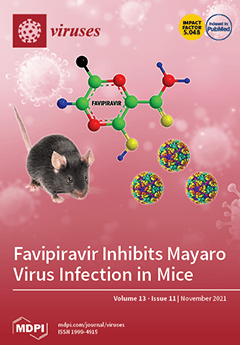Abalone amyotrophia is a viral disease that causes mass mortality of juvenile
Haliotis discus and
H. madaka. Although the cause of this disease has yet to be identified, we had previously postulated a novel virus with partial genome sequence similarity to that of African swine fever virus is the causative agent and proposed abalone asfa-like virus (AbALV) as a provisional name. In this study, three species of juvenile abalone (
H. gigantea,
H. discus discus, and
H. diversicolor) and four species of adult abalone (the above three species plus
H. discus hannai) were experimentally infected, and their susceptibility to AbALV was investigated by recording mortality, quantitatively determining viral load by PCR, and conducting immunohistological studies. In the infection test using 7-month-old animals,
H. gigantea, which was previously reported to be insusceptible to the disease, showed multiplication of the virus to the same extent as in
H. discus discus, resulting in mass mortality.
H. discus discus at 7 months old showed abnormal cell masses, notches in the edge of the shell and brown pigmentation inside of the shell, which are histopathological and external features of this disease, while
H. gigantea did not show any of these characteristics despite suffering high mortality. Adult abalones had low mortality and viral replication in all species; however, all three species, except
H. diversicolor, became carriers of the virus. In immunohistological observations, cells positive for viral antigens were detected predominantly in the gills of juvenile
H. discus discus and
H. gigantea, and mass mortality was observed in these species. In
H. diversicolor, neither juvenile nor adult mortality from infection occurred, and the AbALV genome was not increased by experimental infection through cohabitation or injection. Our results suggest that
H. gigantea, H. discus discus and H. discus hannai are susceptible to AbALV, while
H. diversicolor is not. These results confirmed that AbALV is the etiological agent of abalone amyotrophia.
Full article






